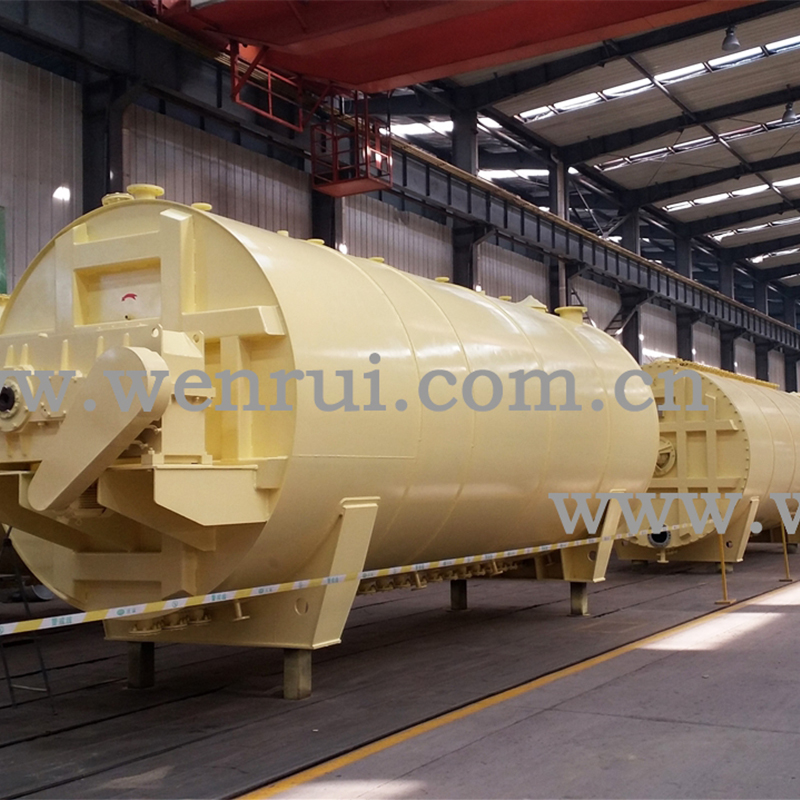
Crystallization is the basic process in industries such as chemical manufacturing, drug production, food processing and wastewater treatment. A crystallizer is a specialized device designed to facilitate the formation of solid crystals in liquid solutions or melts. The effectiveness of a crystallizer depends on several factors, including the type of crystallization process, operating conditions and design specifications.
In this article, we will explore the crystallization process, various types of crystallizers, design principles and operating guidelines. Additionally, we will compare different crystallization technologies, discuss the latest innovations, and provide insights into choosing the best crystallizer for specific industrial applications.
Definition of crystallization process
What is crystallization?
Crystallization is a separation and purification process in which a solid phase is formed from a uniform liquid phase. This occurs through cooling, evaporation or chemical reactions. This process is widely used in the industry to obtain high purity crystal products such as sodium chloride, sugars, pharmaceutical compounds and fertilizers.
Key factors affecting crystallization
The efficiency of the crystallizer depends on:
Supersaturation - The driving force of crystal formation.
Nucleation rate - Determines the number of crystals formed.
Crystal Growth Rate - Influencing crystal size and purity.
Temperature control - affects solubility and growth kinetics.
Stir and mix - prevent unnecessary aggregation.
Industrial application of crystallization
Industry that rely on crystallization include:
Drugs - Produce high-purity active ingredients.
Food Processing - Refined sugar and salt.
Chemical Manufacturing - Extract and purify chemicals.
Water treatment - Remove dissolved solids from wastewater.
Types of crystallizer
There are many types of crystallizers, each designed for a specific application. Below, we compare the most commonly used crystallization systems:
| Crystalizer type | How it works | Advantages | Common Applications |
| Batch Crystalizer | Solutions cooled in a controlled environment to induce crystallization | High control of crystal characteristics | Pharmaceuticals and Fine Chemicals Industry |
| Continuous crystallizer | Maintain steady-state operation of continuous product output | High efficiency, suitable for large-scale production | Large-scale chemical and food industries |
| Vacuum crystallizer | Use vacuum to reduce boiling point and induce crystallization | Energy saving of thermally sensitive materials | Fade, saccharin |
| Forced cycling crystallizer | Use a pump to circulate the solution to enhance mass transfer | Prevent fouls and maintain uniform crystal size | Chemical Industry Crystallization Based on Evaporation |
| Oslo crystallizer | A specially designed to ensure the growth of controlled crystals | Generate uniform and large crystals | High purity chemical production |
Each crystallizer type has its own advantages and limitations, which is crucial for choosing the right system based on product needs, energy efficiency and scalability.
Crystallization design principle
Key Design Considerations
When designing a crystallizer, engineers must consider:
Material Selection - The crystallizer must be resistant to corrosion, pressure and temperature changes.
Heat transfer efficiency - Maintaining the optimal temperature gradient is crucial.
Supersaturation control - Ensures stable nucleation and growth rates.
Fluid Dynamics - Proper stirring and flow ensures even distribution of crystal sizes.
Energy Consumption - Optimizing heat exchangers and vacuum systems can reduce energy costs.
Modern advances in crystallizer design
With the rise of industry 4.0, Crystallizer designs are now merged:
Automatic control system - Real-time monitoring of temperature, pressure and concentration.
Computational Fluid Dynamics (CFD) Modeling – Optimize fluid flow patterns for increased efficiency.
Green Technology - Use energy-efficient recovery systems to minimize waste.
Comparison of batch processing with continuous crystallization
| scope | Batch Crystalizer | Continuous crystallizer |
| Process control | High control, flexible | Lower flexible, stable operation |
| Throughput | Low to medium | High |
| Energy efficiency | Easing | High |
| Scalability | Limited | Suitable for mass production |
| Equipment Cost | Reduce initial cost | High investment, but low operating costs |
Choosing between batch or continuous crystallization depends on the production scale, cost considerations and required product purity.
Crystalizer operating guide
Best practices for effective crystallization
To ensure optimal crystallizer performance, follow the following operating instructions:
1. Maintain proper supersaturation levels
2. Optimize the temperature curve
3. Controlling stirring and mixing
4. Prevent scaling and scaling
5. Ensure proper seeding techniques
6. Monitor and adjust process variables
Implement automatic sensors for real-time data analysis.
Adjust the vacuum pressure, temperature and concentration as needed.
in conclusion
Crystalizers are an important part of the industry that requires high-purity solid products. The choice of crystallization method and equipment design significantly affects product quality, efficiency and cost-effectiveness. With advances in automation and process optimization, modern crystallizers are becoming increasingly energy-efficient and scalable.
By understanding the crystallization process, selecting the appropriate crystallizer type and following best practices, the industry can improve production efficiency while ensuring high-quality crystallized products.
FAQ
1. What are the main functions of crystallizers?
Crystallizer promotes the formation of solid crystals from liquid solutions, which facilitates the purification and separation process.
2. How to choose the right crystallizer for the application?
Select factors such as product purity requirements, production scale, energy efficiency and material compatibility.
3. What are the common industrial applications of crystallization?
Industries that use crystallization include pharmaceuticals, food processing, wastewater treatment and chemical manufacturing.
4. What are the advantages of continuous crystallizers over batch crystals?
Continuous crystallizers have higher efficiency, lower operating costs and better scalability, making them ideal for mass production.
5. How to prevent scaling in the crystallizer?
To prevent scaling, use anti-scaling agents, optimize temperature control and implement regular cleaning procedures.












